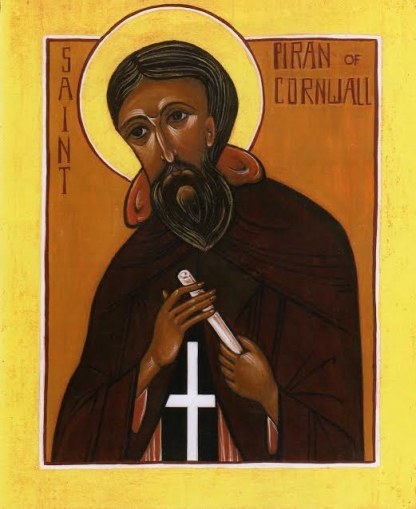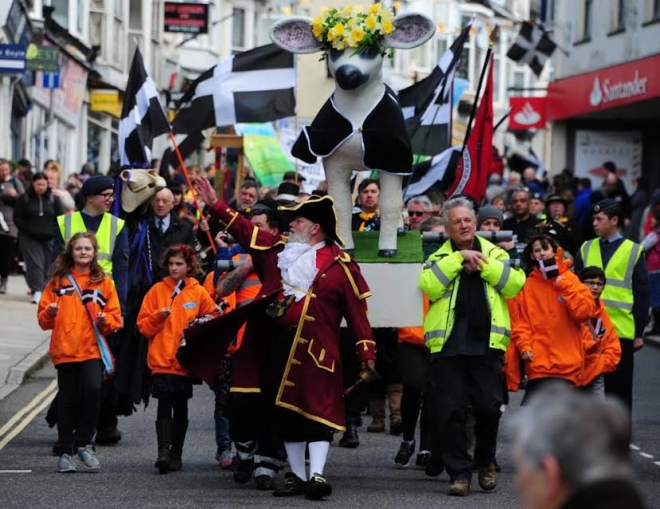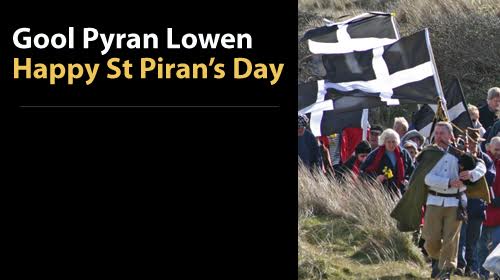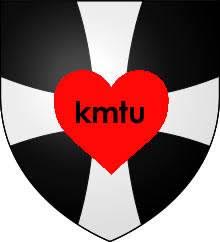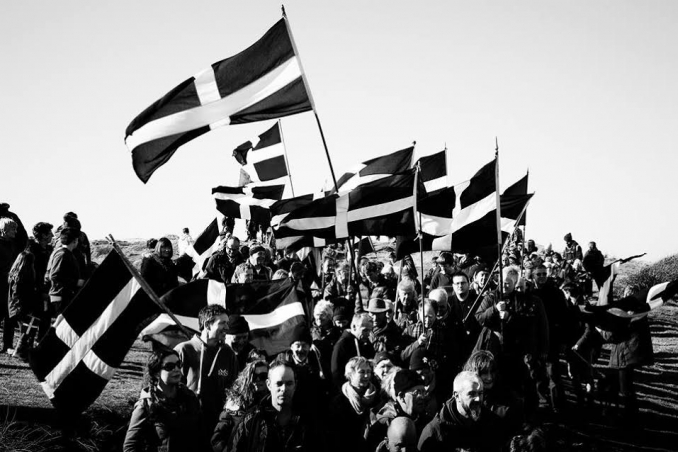GOLPERAN LOWEN! Happy Feast of St Piran! March 5th
News from Kernow Matters To Us:
St Piran
with grateful thanks to CRAIG WEATHERHILL
St Piran is the third in a succession of patron saints of Cornwall, after St Petroc and St Michael the Archangel. Originally, he was the patron saint of tinners.
True to the traditions of Cornish saints, Piran himself is something of a mystery, for he has never been conclusively identified. The tale is that he was thrown from an Irish cliff by antagonistic local chieftains, chained to a millstone which then floated miraculously, bearing him safely across the Celtic Sea to a landfall at Perranporth. There, in the great expanse of sand dunes beyond the beach he built his oratory that is reputed to be the remarkable building that survives to this day (or a likely forerunner of it).
The jury is still out as to whether St Piran was the Irish Bishop Ciaran of Saighir (c.501-530); Bishop Ciaran of Clonmacnoise (516-546), whose father was reputed to have been Cornish; or if he was a native Dumnonian priest who may have trained in Ireland (Dumnonia was the Celtic kingdom that included both Cornwall and Devon). The initial P replacing C would be a natural adjustment of Ireland’s Q-Celtic language to Cornwall’s P-Celtic, but Joseph Loth has argued on philological grounds that Piran could not have been either of the Ciarans. Whoever he was, belief that Piran was of Irish origin has persisted for at least 700 years.
Because of a legend claiming that Piran discovered a method of smelting tin, he became known as the patron saint of tinners, even though the art of tin-smelting had been established in Cornwall for at least two millenia by his time. According to the Calendar of Launceston church, his original feast day was held on November 17th, but it has long been held on March 5th, an adjustment to coincide with the feast day of Bishop Ciaran of Saighir. In the parish of Perranzabuloe in particular, St Pirans’ feast was celebrated with a great deal of ale and liquor, hence the saying: “As drunk as a Perraner.” That the saint himself lived to an unlikely age and died only after falling down a well when drunk appears to be a legend of recent origin.
The distinctive national flag of Cornwall - Baner Peran, or the Flag of St Piran - is said to represent a cross of white molten tin against the black of the cassiterite ore from which it derives. A parallel explanation is that it could represent the light of good against the darkness of evil.
And what of the miraculous millstone? That could well have a basis in fact. Travelling Celtic priests of Piran’s era often carried a portable altar-stone which they hung about their necks. These were circular, about the size of a small dinner plate, and perhaps bearing an incised Chi-Rho symbol (The Greek letters XP, one superimposed on the other, and which formed the first two letters of Kristos, “Christ”).
GOLPERAN LOWEN! Happy Feast of St Piran! March 5th.
Craig Weatherhill (extract from the forthcoming book: The Promontory People)
Deth Sen Piran Da!
Kernow bys Vyken!
Issued on behalf of Kernow Matters To Us.
John, Teresa, Craig, Tony, Matt, Mike, Clive, Ronan, Samuel & Mark
Elected Members of the KMTU Steering Group
